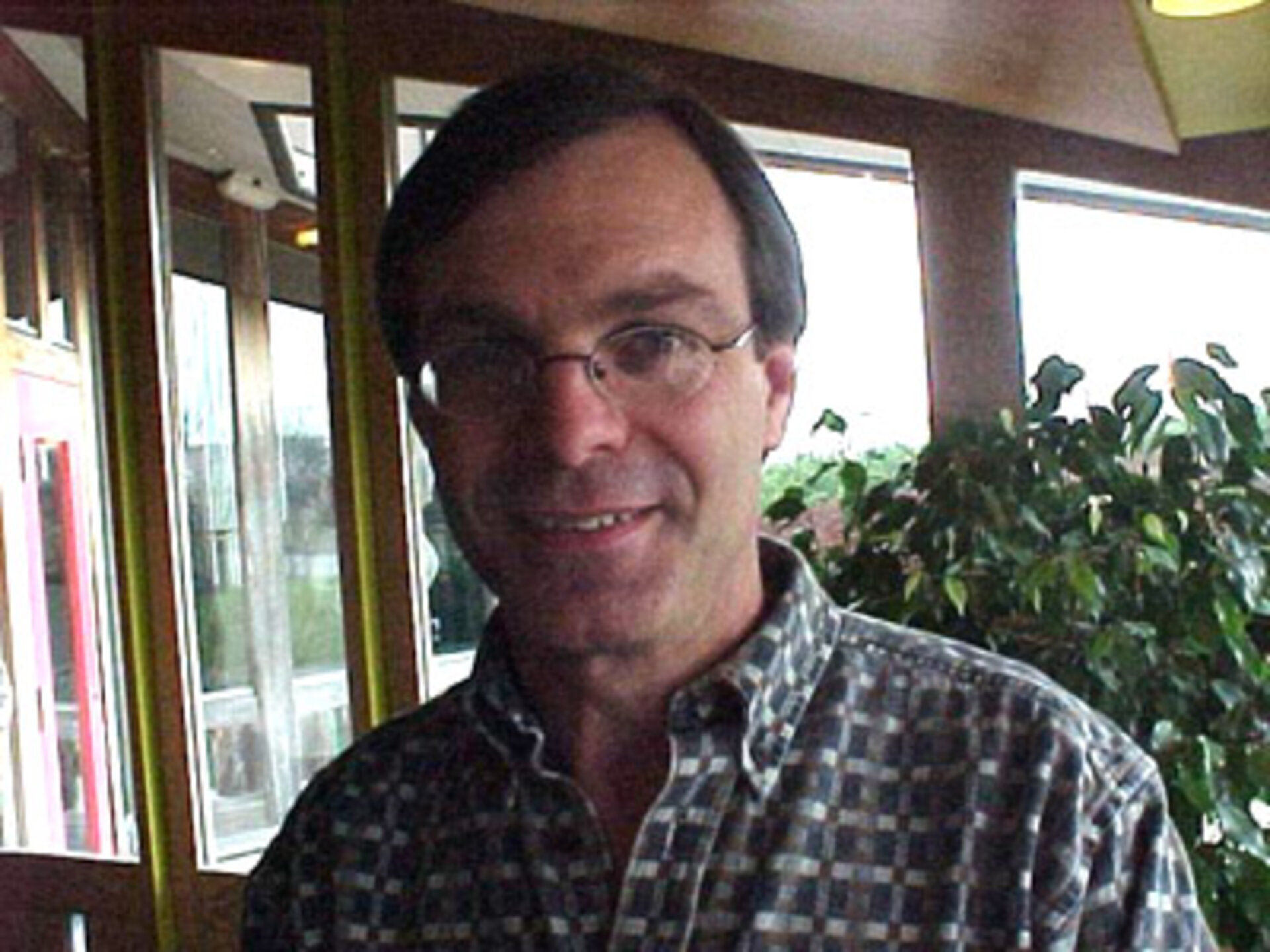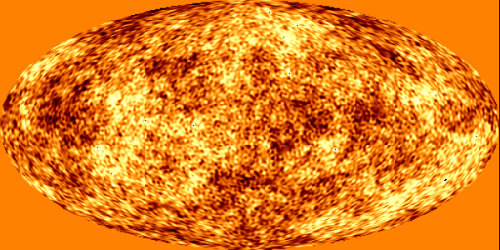BOOMERANG: An interview with Andrew Lange
The Cosmic Microwave Background radiation (CMB) holds a wealth of information about the early Universe. In 2007 ESA's Planck satellite will analyse the CMB with the highest accuracy ever achieved, but in the meantime several instruments worldwide are already working to acquire as much data as possible.
One of those is an international balloon experiment called BOOMERANG (Balloon Observations Of Millimetric Extragalactic Radiation and Geomagnetics), results from which were released in 2001. Boomerang is an extremely sensitive microwave telescope that was carried by a balloon that circumnavigated the Antarctic in late 1998. The balloon carried the telescope at an altitude of almost 37 000 metres (120 000 feet) for 10 days. Initial images were published a year ago but since then astronomers have been able to carry out a more detailed analysis.

Andrew Lange
US team leader, BOOMERANG experiment
Goldberger Professor of Physics, California Institute of Technology, Pasadena, United States
ESA: In 1992, NASA's COBE satellite confirmed that the CMB still bears the 'imprints' left by matter in the early Universe. What are the main differences between COBE, BOOMERANG and Planck?
Andrew Lange
BOOMERANG was the first experiment to resolve the structures in the CMB, allowing us to 'see' structures that predate even the first star or galaxy in the Universe. In comparison with the images that Planck will some day produce, however, the BOOMERANG map is of a much lower quality, and it covers only about 3% of the sky. The Planck map will have greater angular resolution, will measure many more frequencies, and will cover the entire sky. So we will learn dramatically more from Planck.
ESA: Can you expand on that?
Andrew Lange
We describe our model of the Universe with twelve parameters or so, such as the rate of expansion, the nature and density of the so-called dark matter, etc. When the quality of the measurement improves you will be able to measure more and more of those parameters. The easiest to measure is the geometry of the Universe, and this is measured by BOOMERANG. Planck will be able to measure ten or more parameters, each with more accuracy than that achieved by BOOMERANG. Planck will be revolutionary!
ESA: Planck will measure the temperature of the whole sky, looking for tiny variations - some only a few millionths of a degree Celsius - in the temperature of the CMB. So how can you be sure of your measurements?
Andrew Lange
It has to be understood that these measurements are very different from most astronomical observations. They are more like a high-energy physics experiment than an astrophysical observation. And they are very difficult. Generations of sub-orbital experiments like BOOMERANG have taught us how to separate the CMB signal from the many other sources that can contaminate the measurement. Using this experience, both the theoreticians and the experimentalists are trying to anticipate as much as they can all the sources of contamination that will affect Planck, and to find ways to either prevent them from occurring (that's the goal of the experimentalists) or to identify them in the data. But it will certainly be a very difficult mission. Even if the instrument works perfectly, I estimate that for the basic results it will require hundreds of man-years of analysis effort to fully extract all of the information from the data.
ESA: There are about 300 physicists worldwide involved in Planck. Is this normal for a cosmology experiment, or is this a new way of doing research in this field?
Andrew Lange
The size of the team is normal for a high-energy physics experiment. But we are astronomers and we have no experience in working in such a big group, so one of the things we have to do is to learn the sociology!
ESA: BOOMERANG found strong evidence in favour of a 'flat' Universe. This in turn favours the 'inflation' models. How are these concepts related?.
Andrew Lange
There are a dozen parameters to describe the Universe and inflation makes very specific predictions about a few of them. The geometry of the Universe is one of these parameters, and it is related to the density of the Universe. Only five years ago we were arguing whether the density of the Universe is 0.3 or 1. For a flat Universe you need a density of 1 [a density smaller than 1 would result in an 'open universe' that expands forever, whereas a density larger than 1 leads to a re-collapse of the Universe in the future, in a sort of 'big crunch'. In a flat Universe the density of the Universe is just right to stop the expansion but also to avoid a re-collapse]. Now Boomerang tells us that the density is in fact very close to 1. And if the geometry is confirmed to be flat, that will be strong support in favour of inflation. The enormous expansion at the very beginning would have stretched the geometry of space until it was perfectly flat. Planck will be able to tell us the density - and thus the geometry - of the Universe to within 1%, and that will be very interesting.
ESA: The fact that the Universe is flat, is that enough to confirm inflation?
Andrew Lange
Inflation makes predictions also about how the anisotropies, the slight differences in temperature that we measure, are distributed on the sky. So we can go and measure the numbers that go with those predictions. But then we will measure other parameters that are not directly related to inflation, like the density of non-ordinary matter (matter that we know is there though we don't know what it is), or the density of this dark energy. [Independent measurements seem to confirm the fact that the Universe is accelerating, possibly due to the action of a 'dark energy' which has yet to be measured and which some call 'quintessence'].
ESA: Other experts are sceptical about the quintessence or dark energy, what do you think?
Andrew Lange
There are two different lines of evidence now, and I think that the evidence is very firm. The supernova results give evidence that the expansion of the Universe is increasing as a function of time. But independent of that, the BOOMERANG results together with the distribution of matter today, also lead us to conclude that about two thirds of the energy of the Universe must be in this unknown dark form. And in fact if you look at the value measured by the supernova results and those measured by BOOMERANG, together with the large scale structure observations, they agree very well. So there are two very different lines of evidence indicating that the Universe is accelerating. I believe it now.
ESA: What would the dark energy be made of?
Andrew Lange
Nobody has any idea, which is why it is so interesting. And this is also another reason to compare this with a physics experiment, because this is not the conventional topic studied by astronomers.
ESA: Which questions will Planck leave unanswered?
Andrew Lange
Many, of course. In terms of the CMB itself, we will still want to know more about the polarisation. Gravity waves from the beginning of the Universe can polarise the CMB and leave a very specific signature in it. It is very difficult to detect, but if we can detect it we will actually be looking back all the way to a tiny fraction of a second after the Big Bang. We think now that the Universe went through a period of inflation, and the signature we can look for is that during inflation there was a huge expansion of matter, and a lot of gravity waves were produced, and those have been transmitted to us. The only way we can see them today is by looking at the effect they have on the CMB. I don't know if I'll be alive when that happens, but we are already working on technologies for a mission beyond Planck. We began to work on the technologies for Planck eleven years ago, so now it is the right time to work on future missions. What will we discover with them? We don't know. The great thing here is that you can not predict what's going to come next. Five years ago no-one took the idea of the dark energy seriously!




